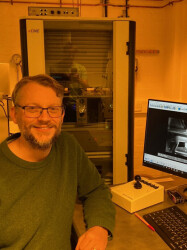BibTex format
@article{Gartside:2021,
author = {Gartside, JC and Stenning, KD and Vanstone, A and Dion, T and Holder, HH and Arroo, DM and Caravelli, F and Kurebayashi, H and Branford, WR},
journal = {Nature Nanotechnology},
pages = {460--469},
title = {Reconfigurable Training and Reservoir Computing in an Artificial Spin-Vortex Ice via Spin-Wave Fingerprinting},
url = {http://arxiv.org/abs/2107.08941v3},
volume = {17},
year = {2021}
}

